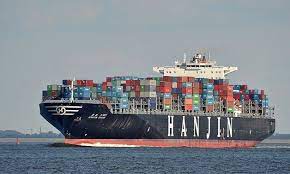
The COVID-19 pandemic shook the entire world, and the US import-export market was no exception to it. The importers in the USA contribute 13.4% share to the world merchandise trade, and during the pandemic, it reduced by 2%. At the same time, the importers involved in the world merchandise trade, excluding intra-European Union trade, contributed 16.2% share to the global trade, which too was deducted by 2% because of the pandemic.
Let’s look into the fine-grained data based on UNCTAD (United Nations Conference On Trade And Development) 2020 and other official databases to understand how USA import Data trade was before COVID-19 and how the statistics changed during the pandemic.
How Was US Import Data Trade Before COVID-19?
The United States is the world’s largest importer. Based on the 2019 trade database, 80% of US imports were goods ($2.5 trillion) which are predicted to fall under the current pessimistic COVID-19 situation.
Let’s take a look at these numbers and to guess the stats-
Summary Of US Imports In 2019-20
Before the pandemic in 2019, US importers imported goods and services worth $3.1 trillion and comprised of the following-
| Individual Asset In US Imports | Asset Value |
| Capital Goods | $678 billion |
| Consumer Goods | $654 billion |
| Industrial Machinery & Equipment | $522 billion |
| Automotive Assets | $376 billion |
| Food, Feed & Beverages | $151 billion |
| And Services | $597 billion |
How COVID-19 Affected US Importers Trade?
Import companies in USA trade most of their goods and services from Asian countries like China, India, Sri Lanka. When COVID-19 was first reported in Wuhan, China, its impact on global trading was not seen.
But as it spread across Asia, global import-export-trading collapsed during the first quarter and severely affected the importers in USA and other parts of the world. When governments canceled the passenger and cargo flights to the US, the only trade possible was urgent merchandise. Hence, the importers could only trade medical equipment, masks, PPE kits needed for handling the COVID-19 situation, and food imports to some extent.
When the Covid-19 situation worsened, an immediate lockdown was announced, and subsequently, import companies in USA experienced a steep pitfall. As a result, the demand for most goods and services fell to the lowest and had a similar impact to the 2009 financial crisis.
Furthermore, due to lockdown initiation in several states, the demands and prices for goods and services fell, and importers in USA experienced heavy losses.
How Did US Importers Overcome COVID-19 Crisis?
Import is essential to support the US economy and meet the people’s demands, and the importers in the USA were aware of it. So to implement resolutions to the COVID-19 import crisis, US importers took some major steps.
The first and most important step was not to worsen the current situation. Therefore, importers avoided restrictions on essential goods like medical equipment and food stocks.
Instead, necessary actions were taken to increase the import of crucial medical supplies such as ventilators and masks to combat the pandemic.
Furthermore, they pioneered a new trading environment comprising transparent, non-discriminatory, time and commitment-bound principles. It will allow consumers to decide how they want goods and services and put specific inputs to them.
What Is The Future Of US Import Data?
While the world is recovering from the COVID-19 impact, the importers in USA have learned their lessons in the light of past and recent experiences. Admittedly, the current situation of US imports isn’t optimum, but it is getting better due to major actions taken by the US government to minimize the incurred losses.
Given the situations and actions taken by the government and importers, the US import market is likely to recover very soon. As a result, it will rebound as the most robust, widespread, and sustainable trade market in the world.





